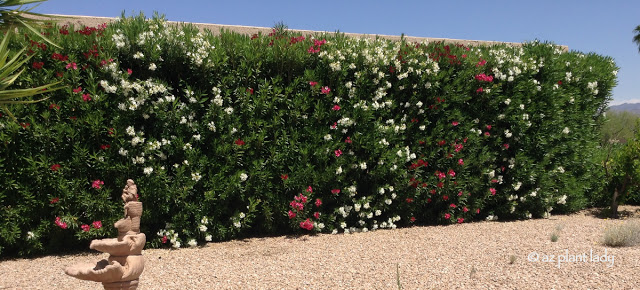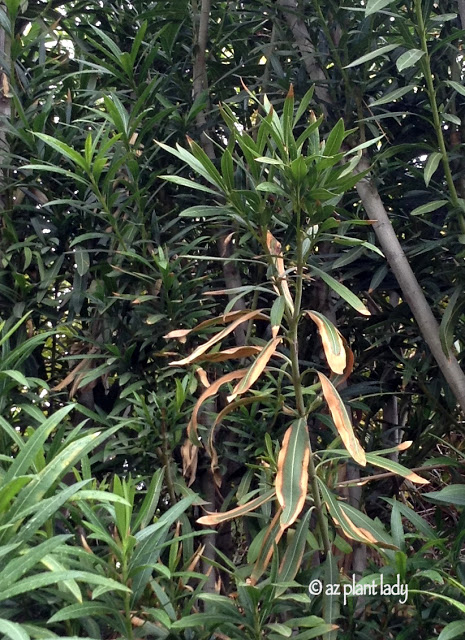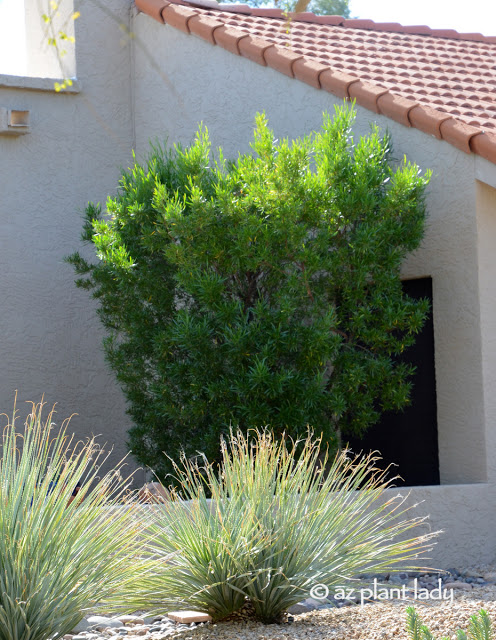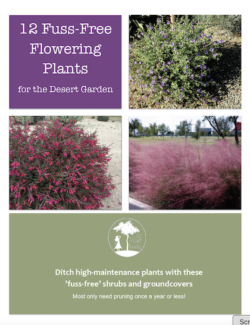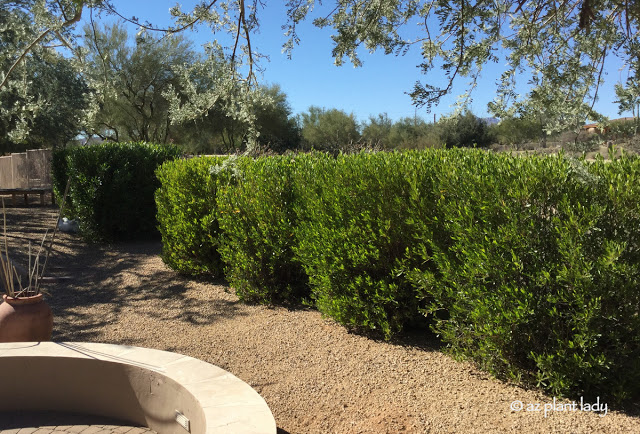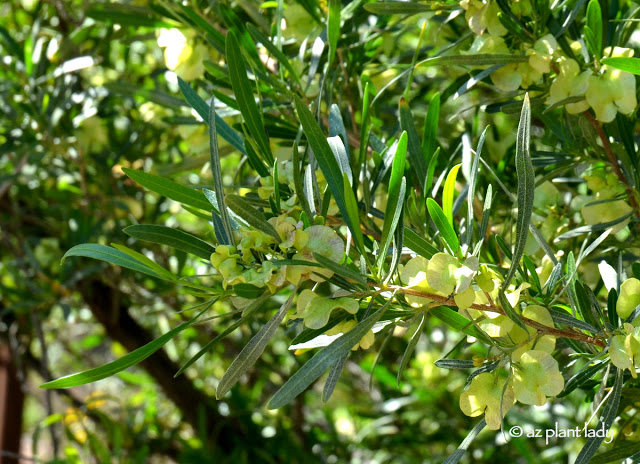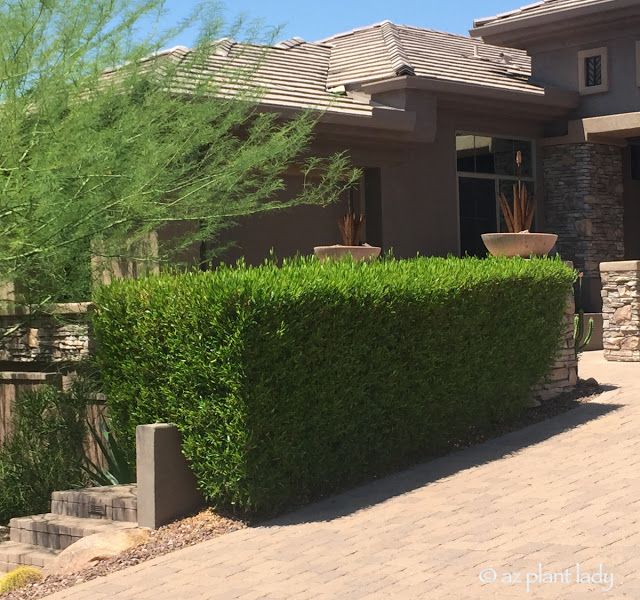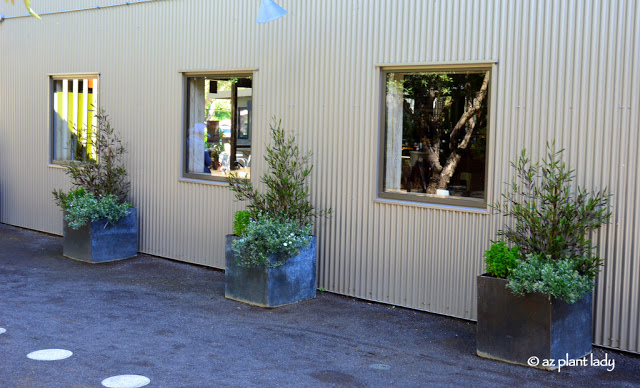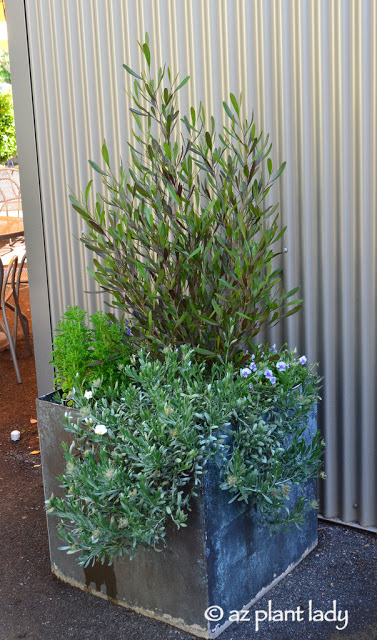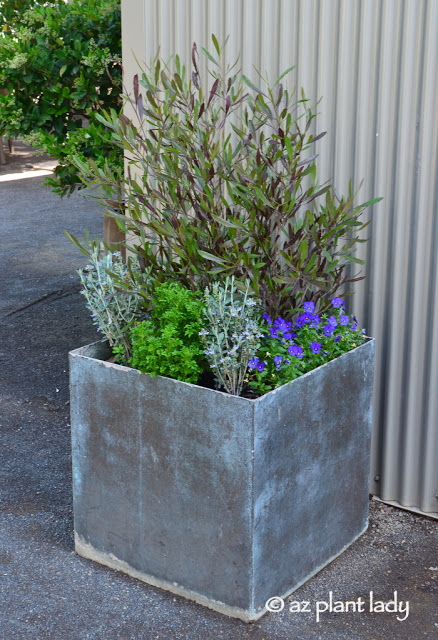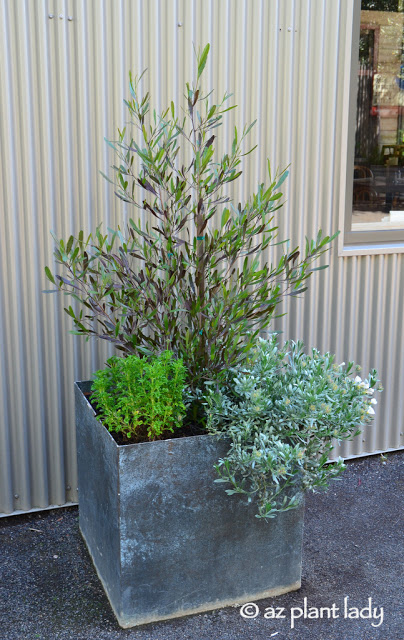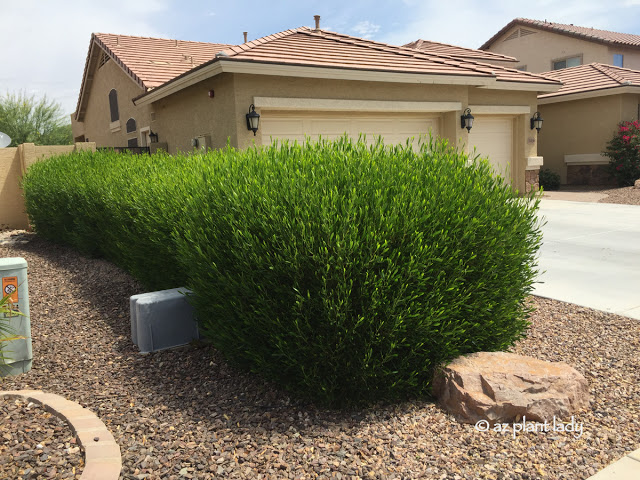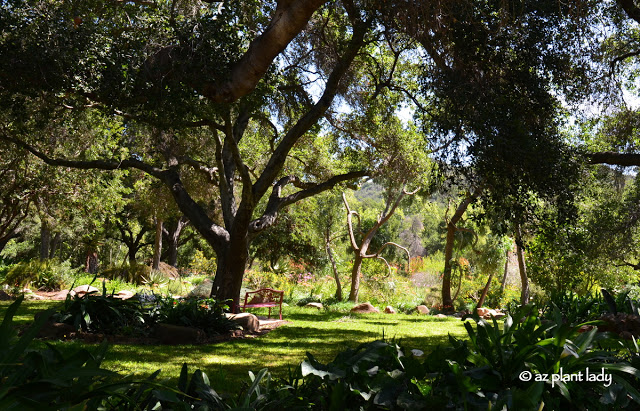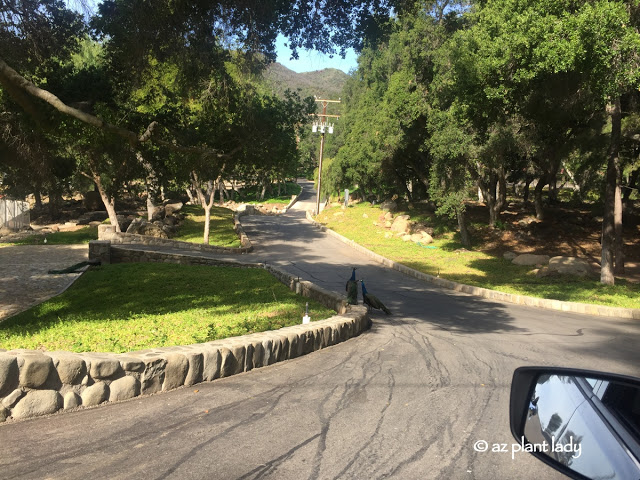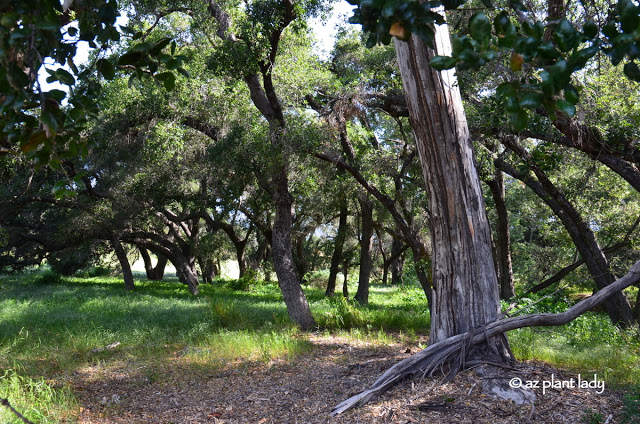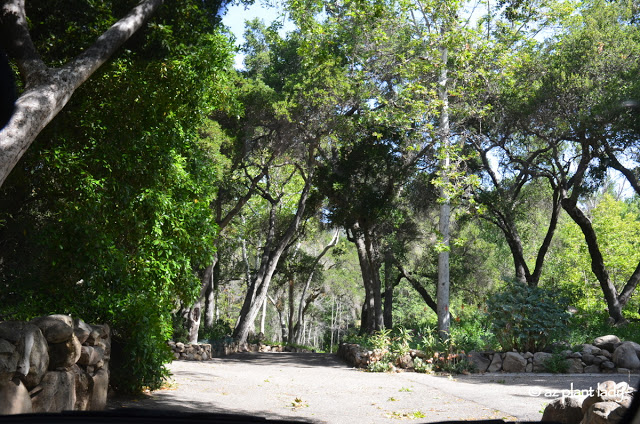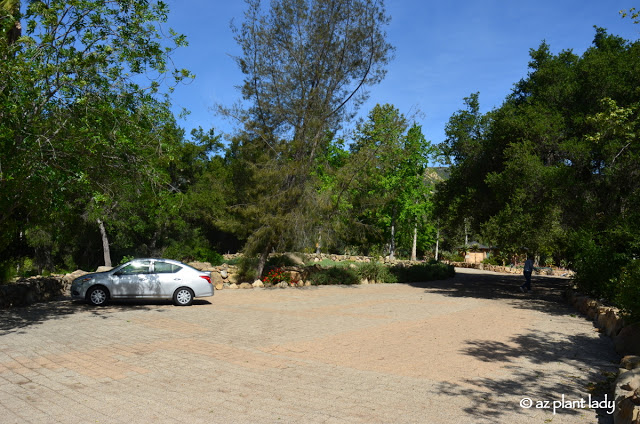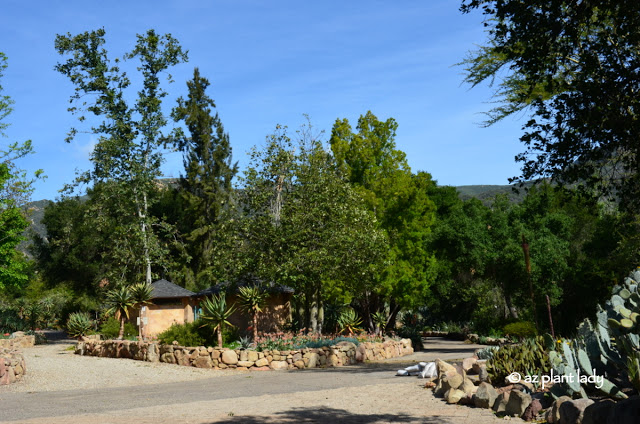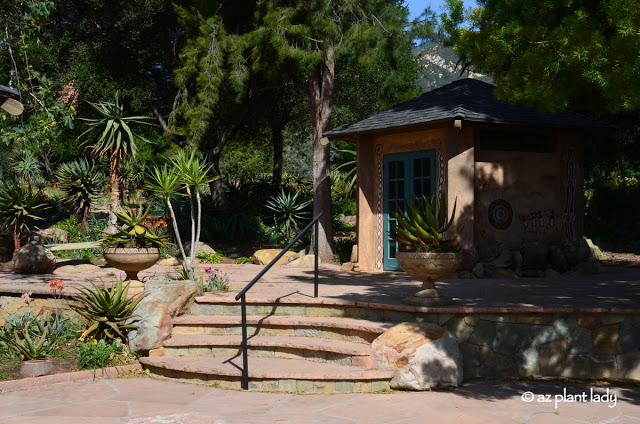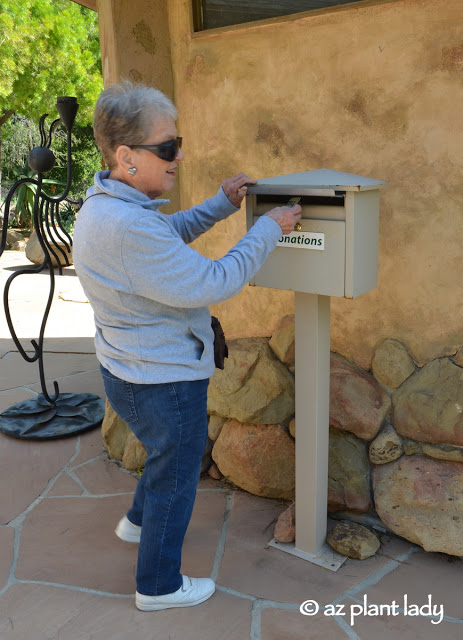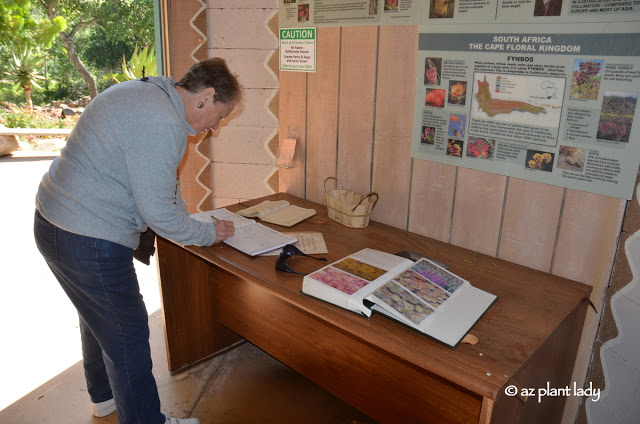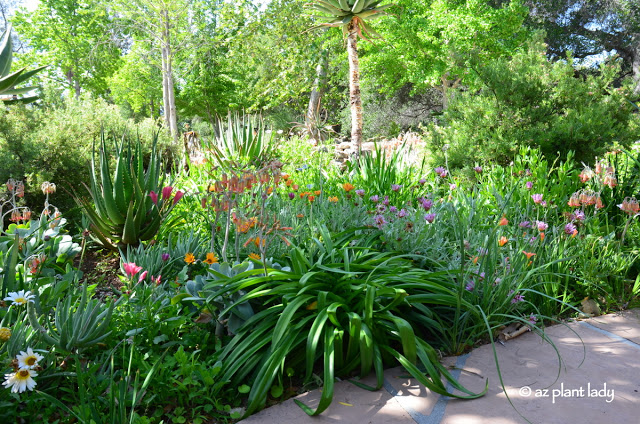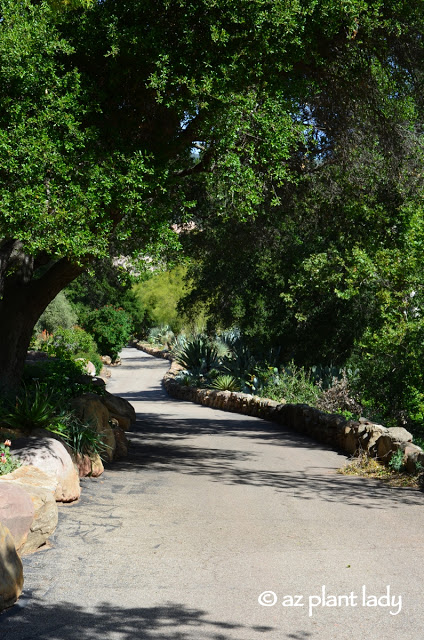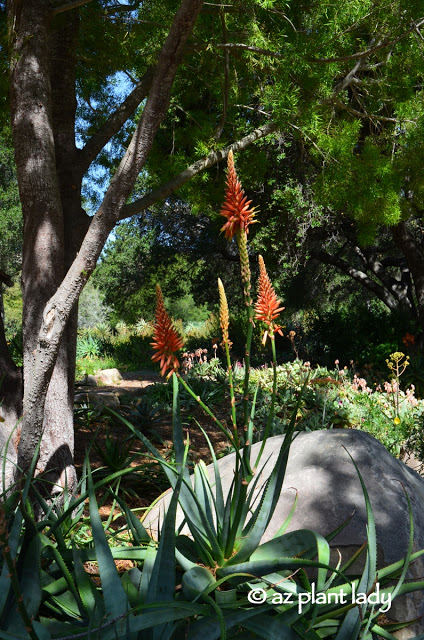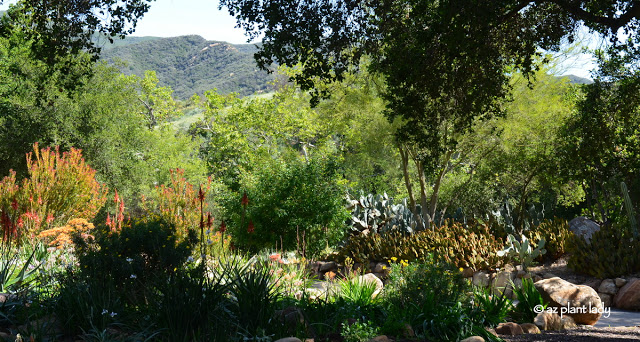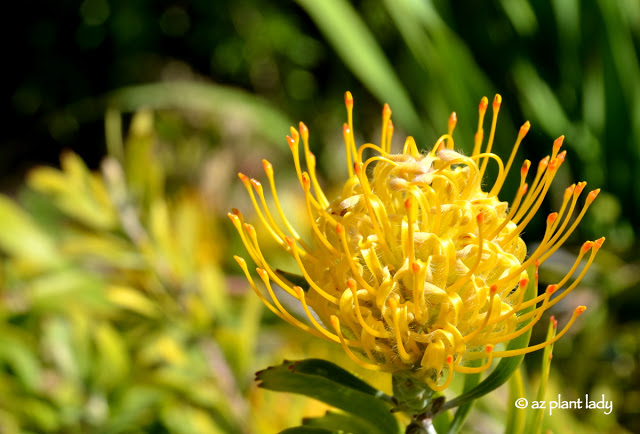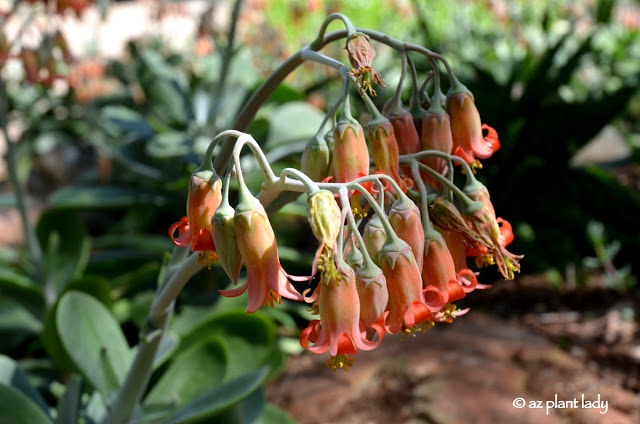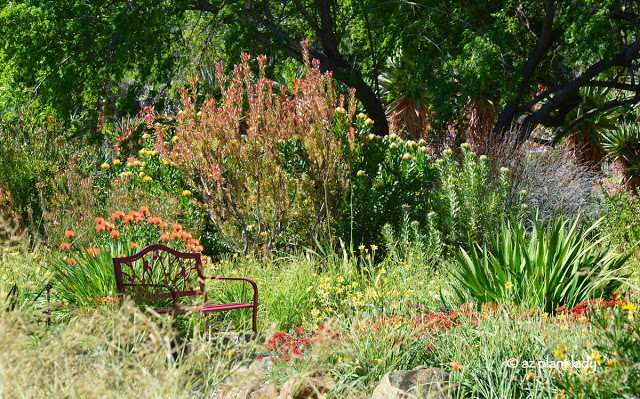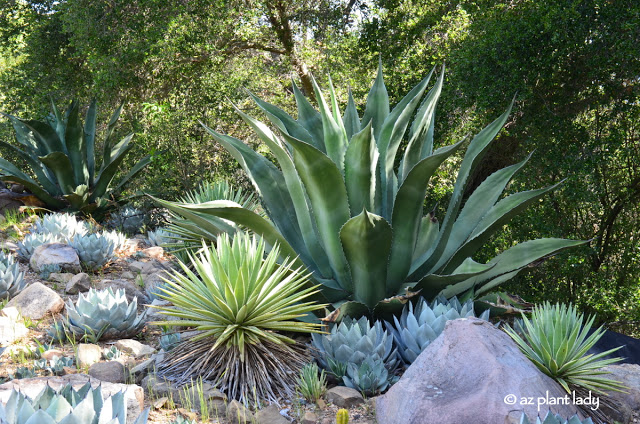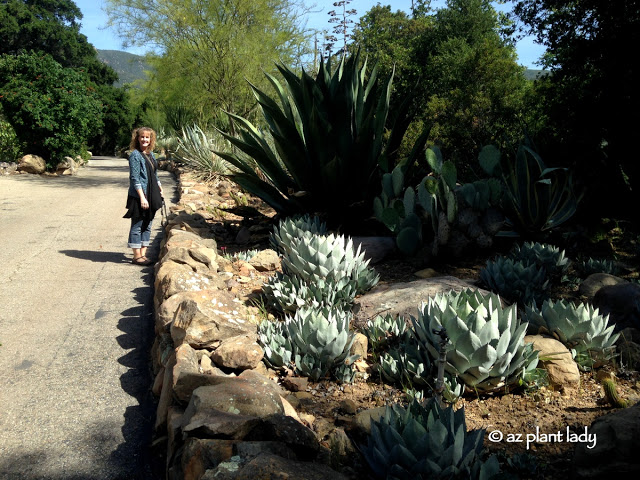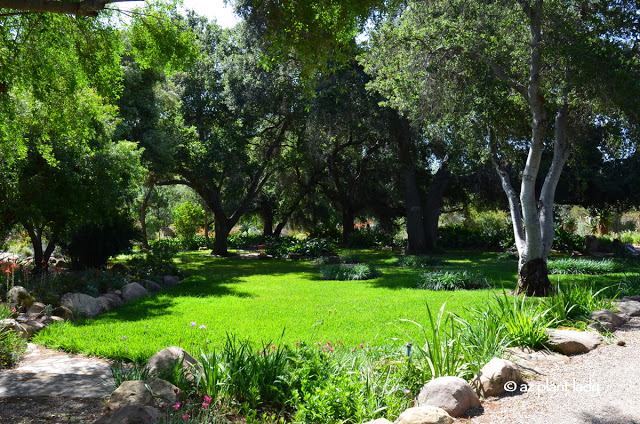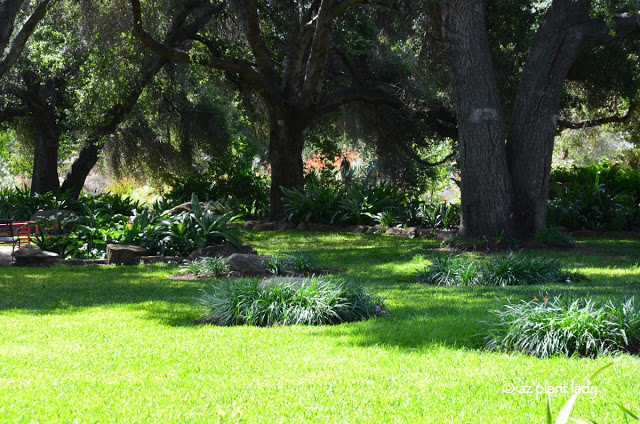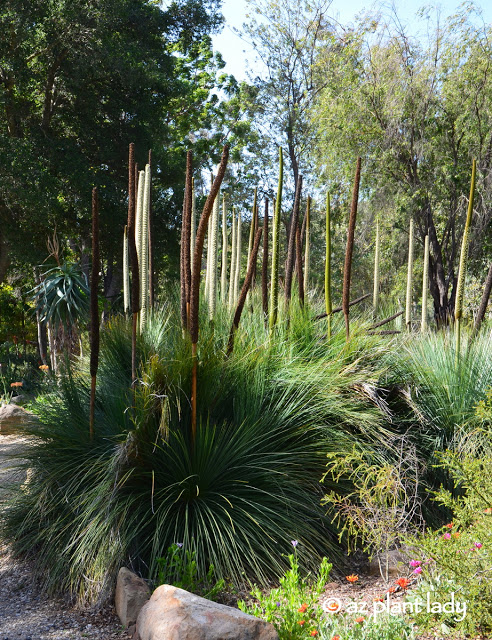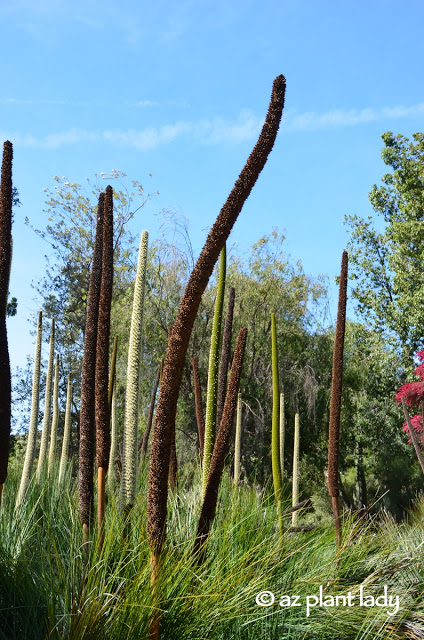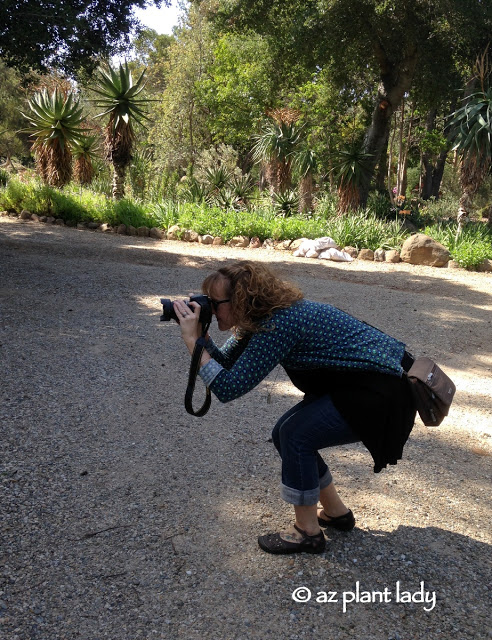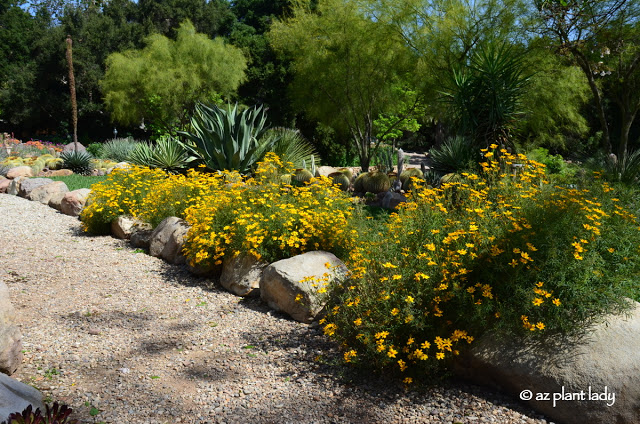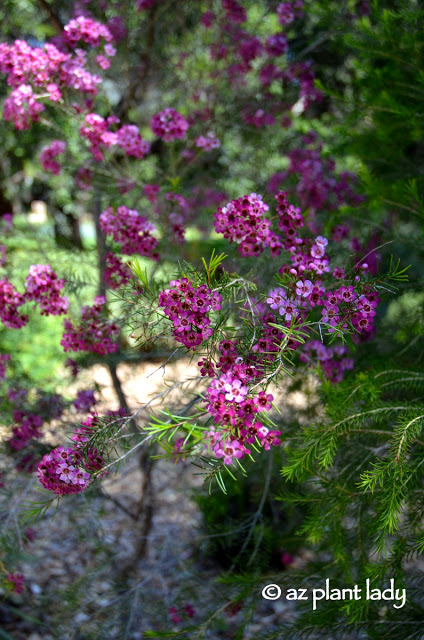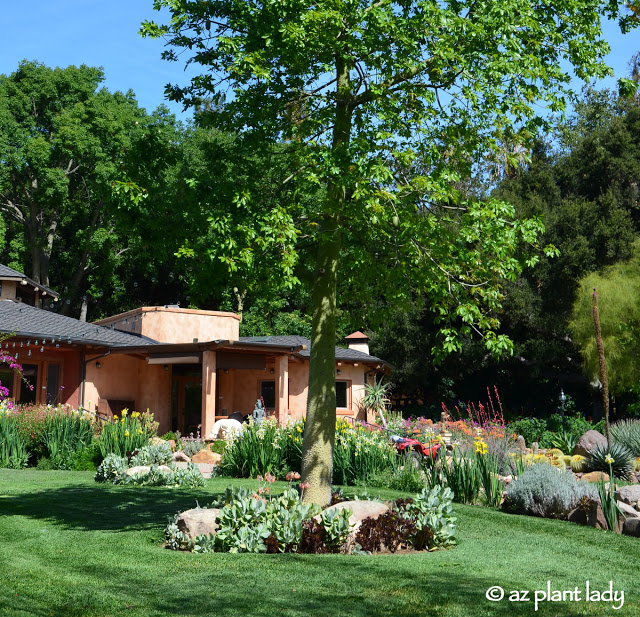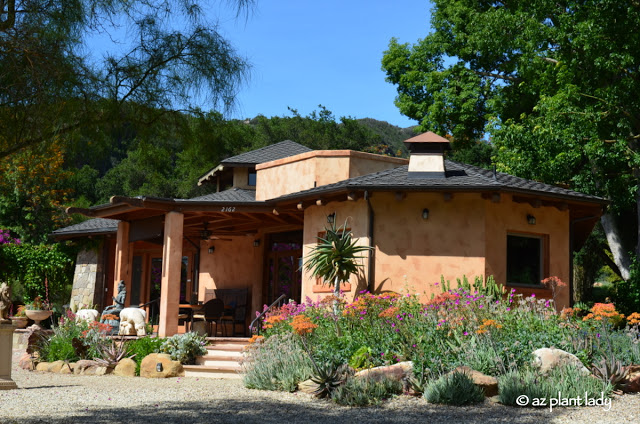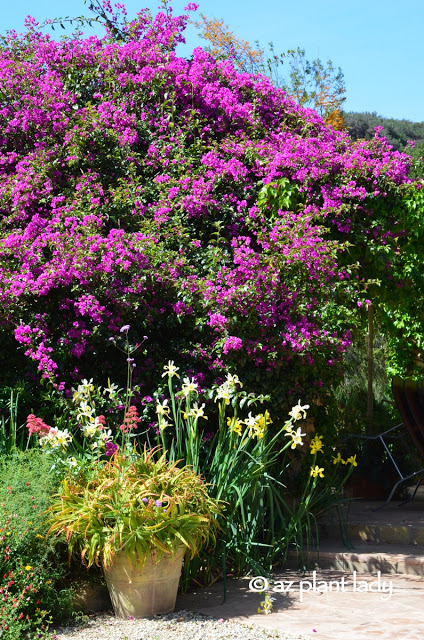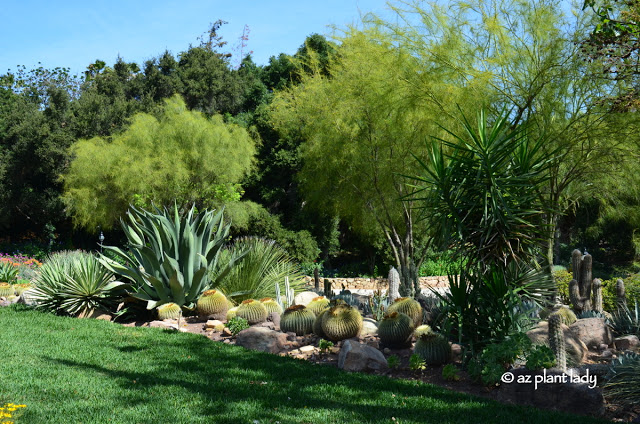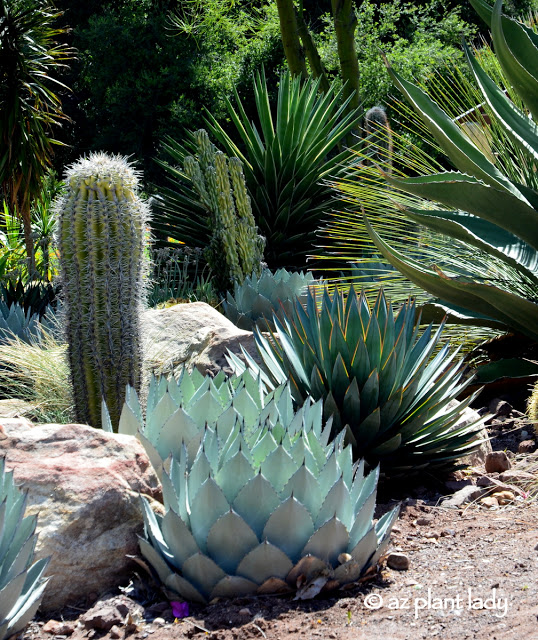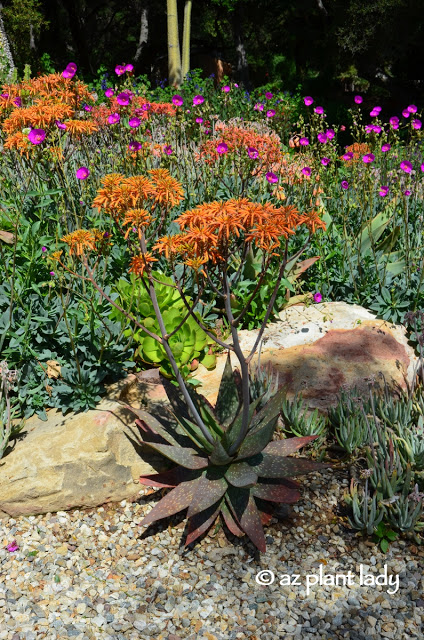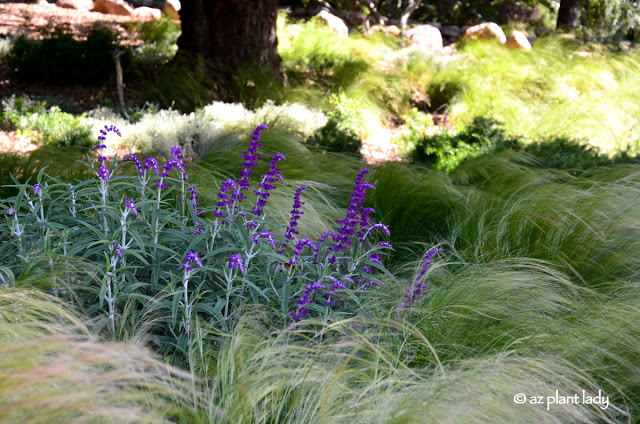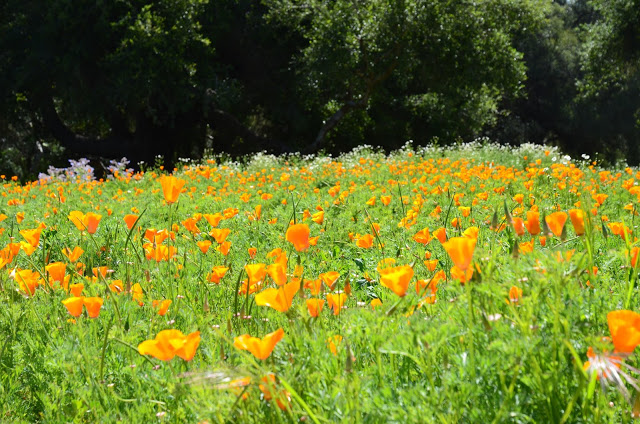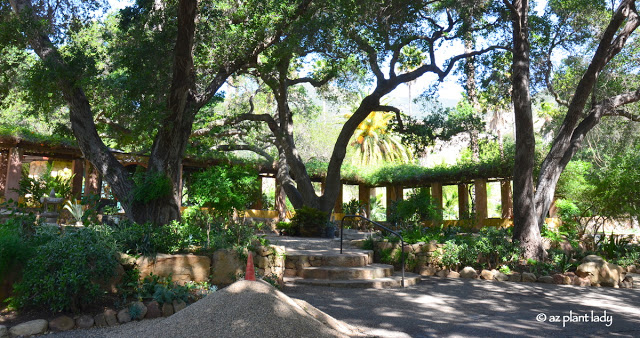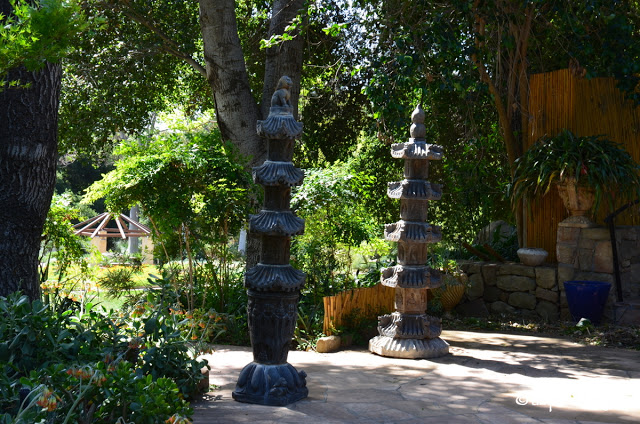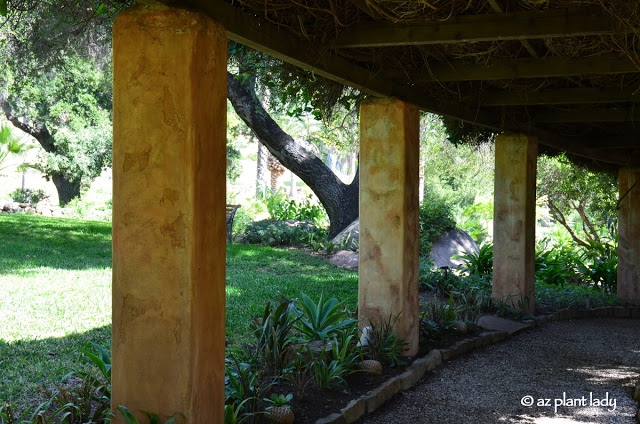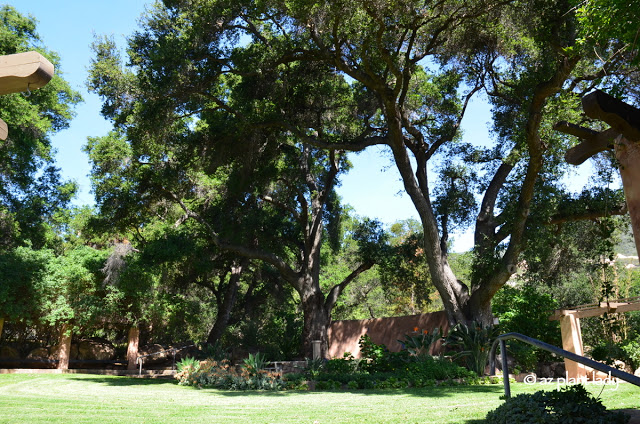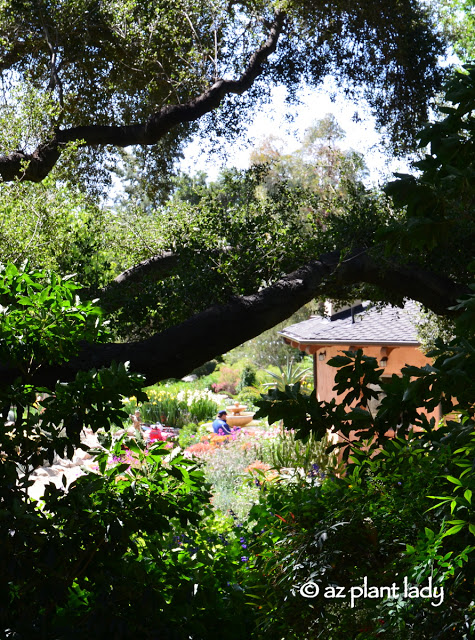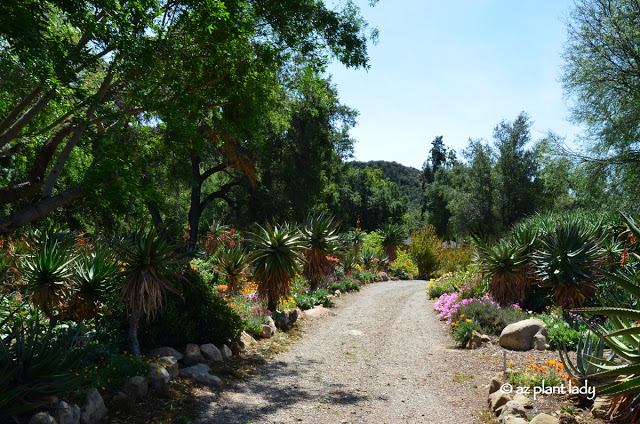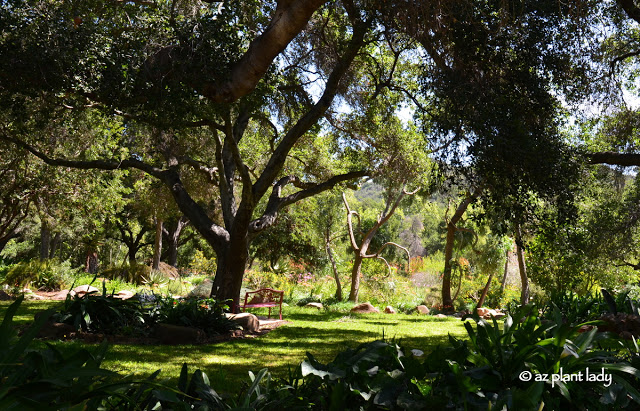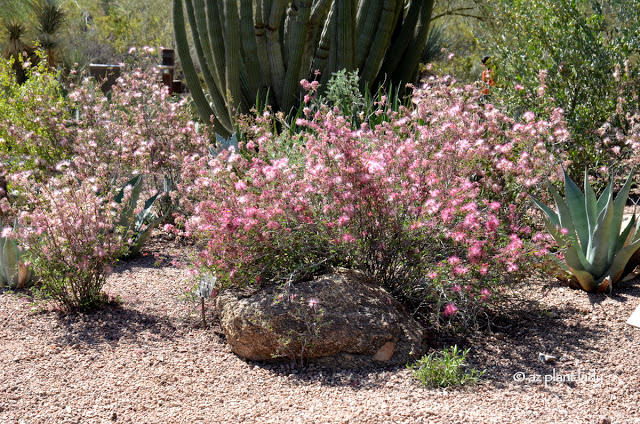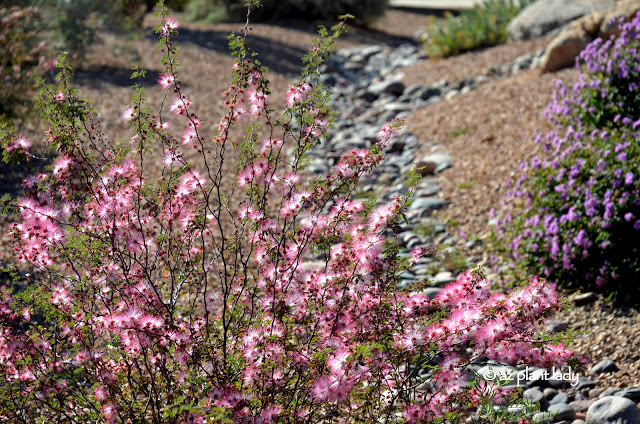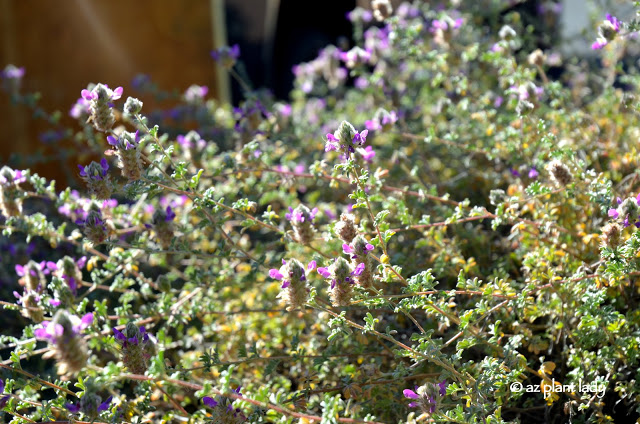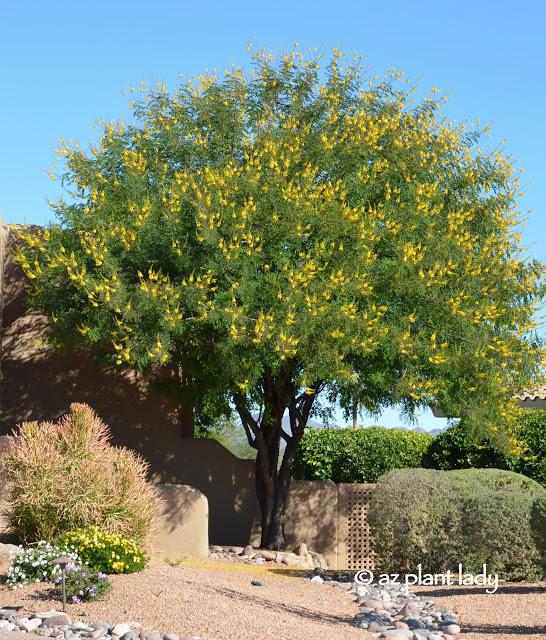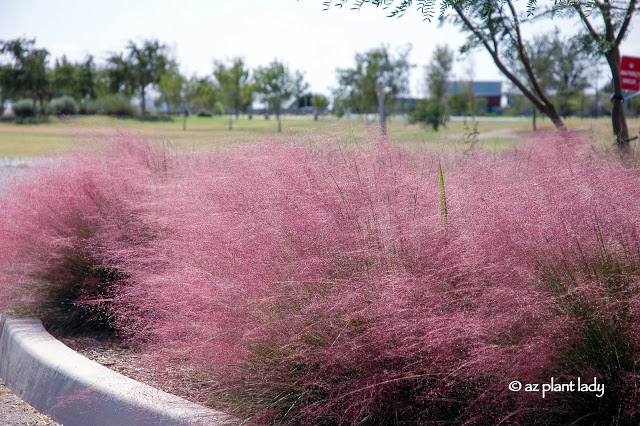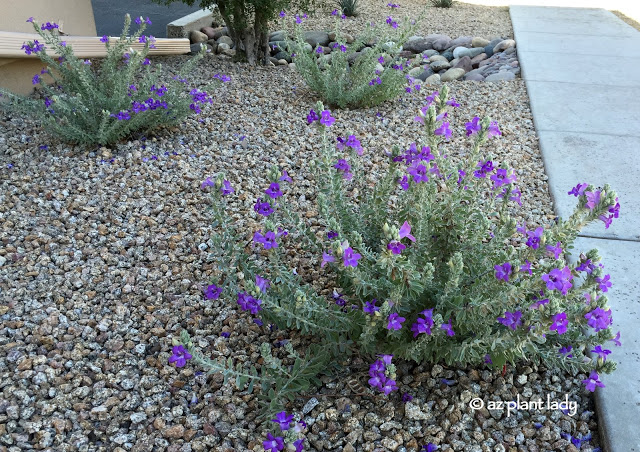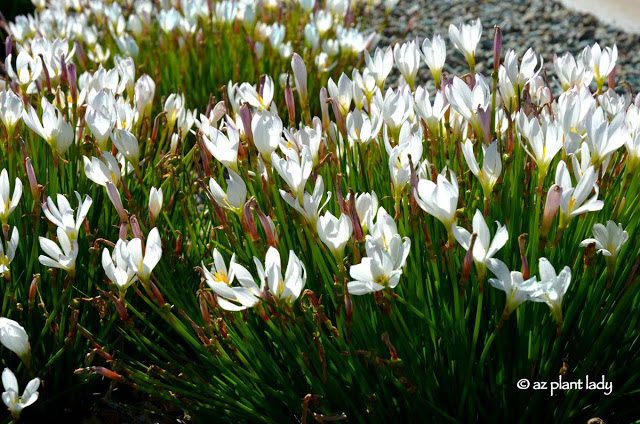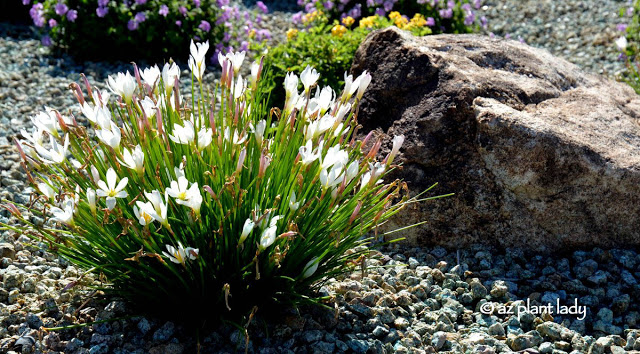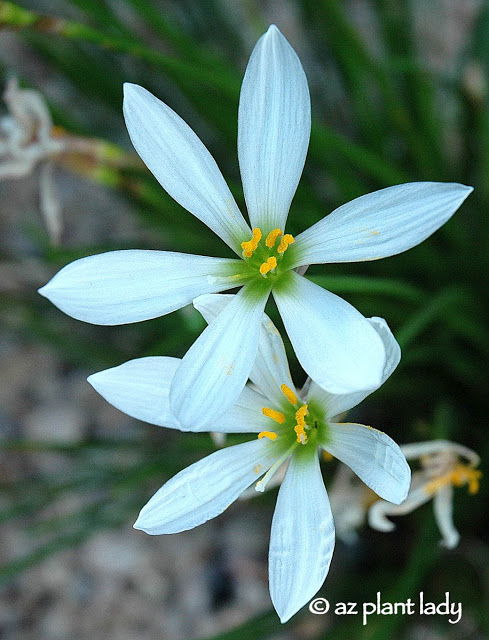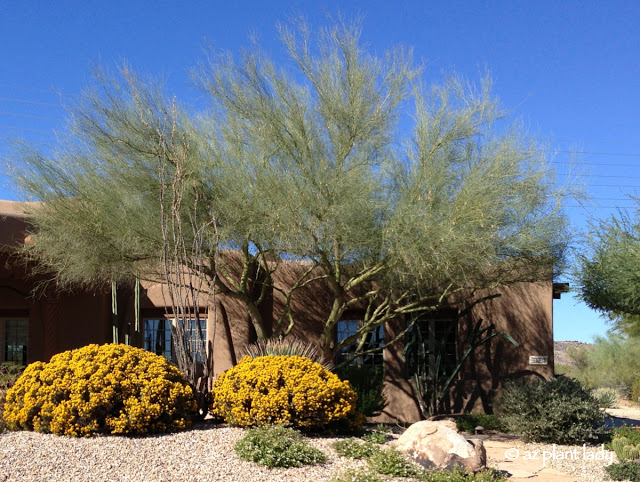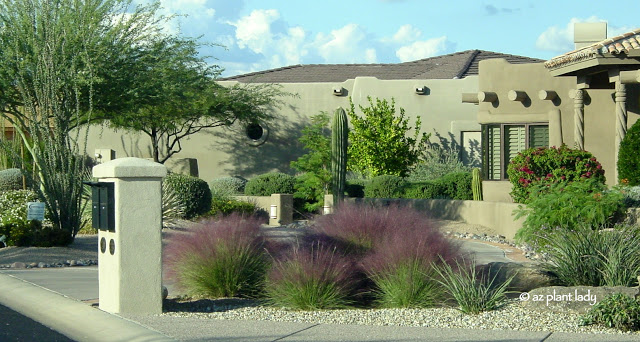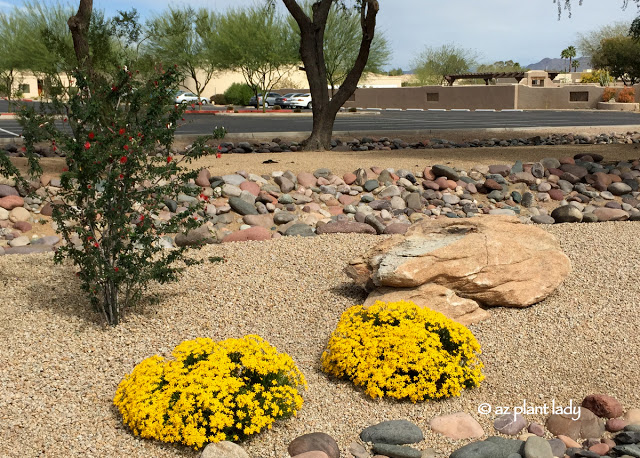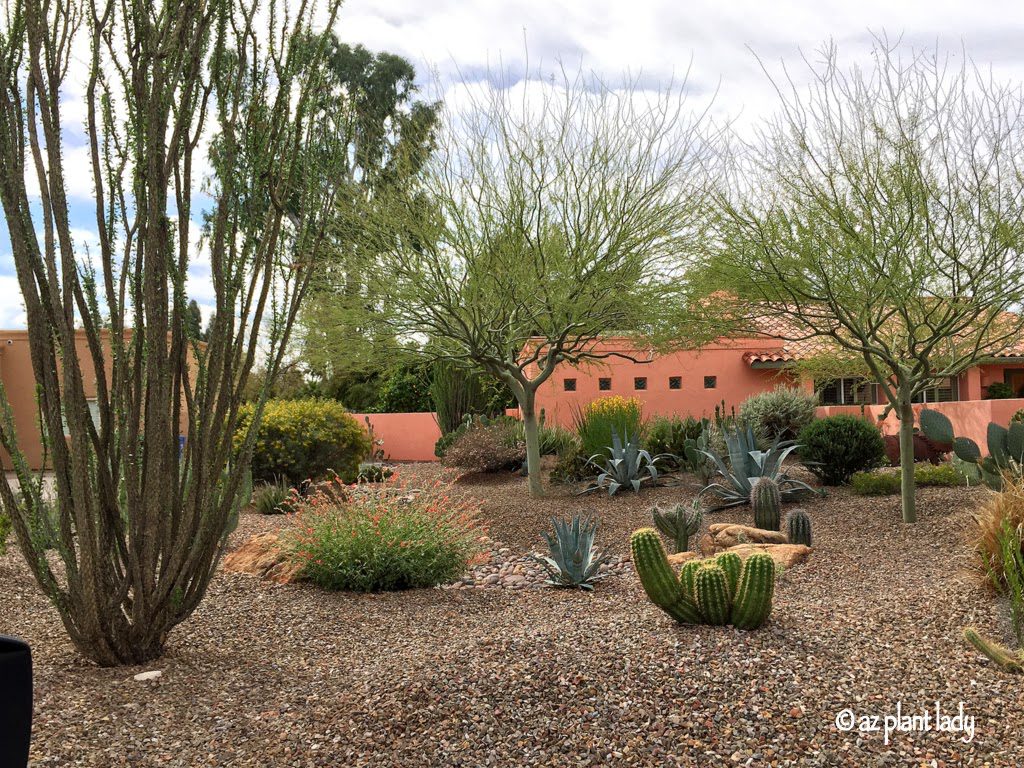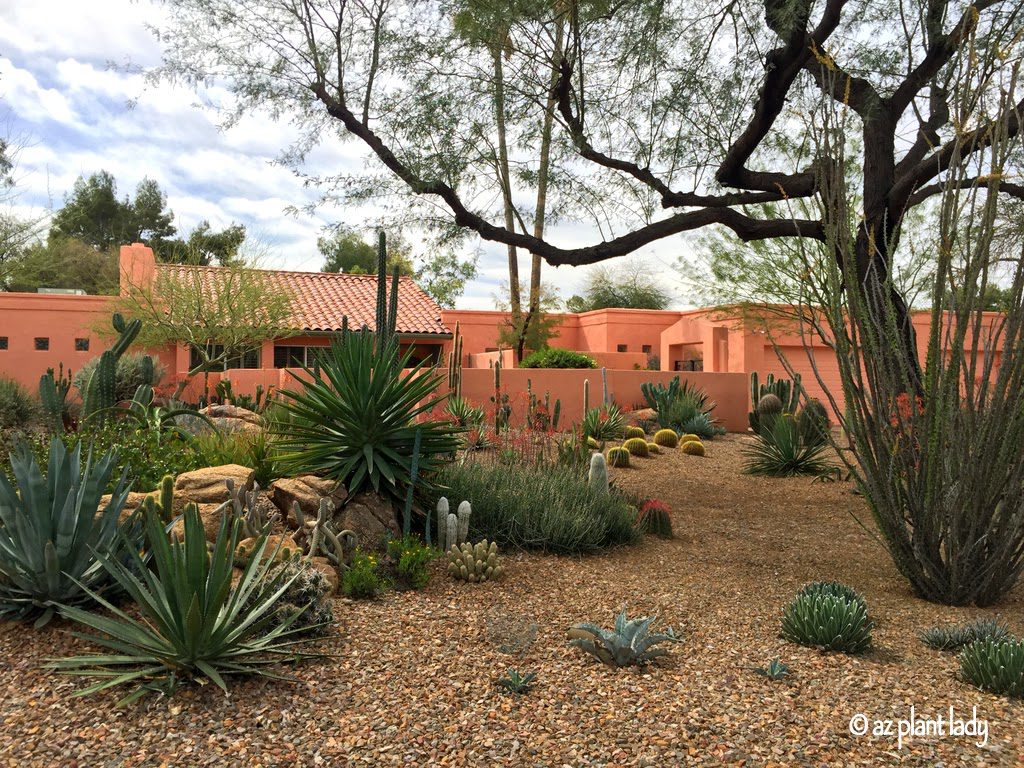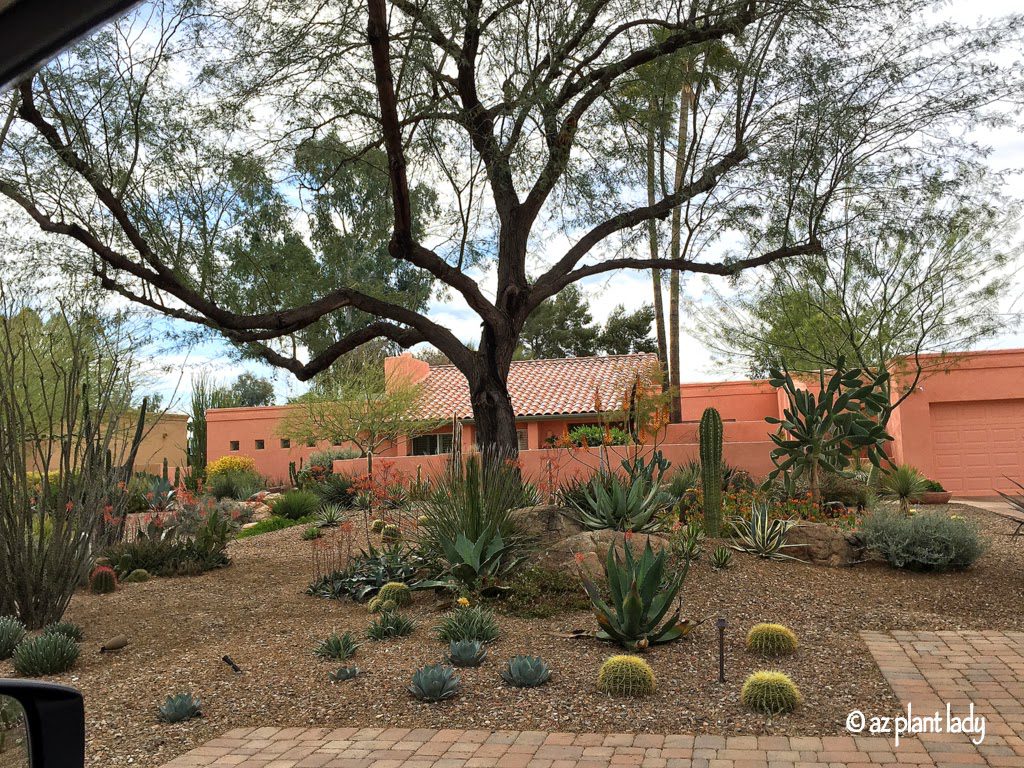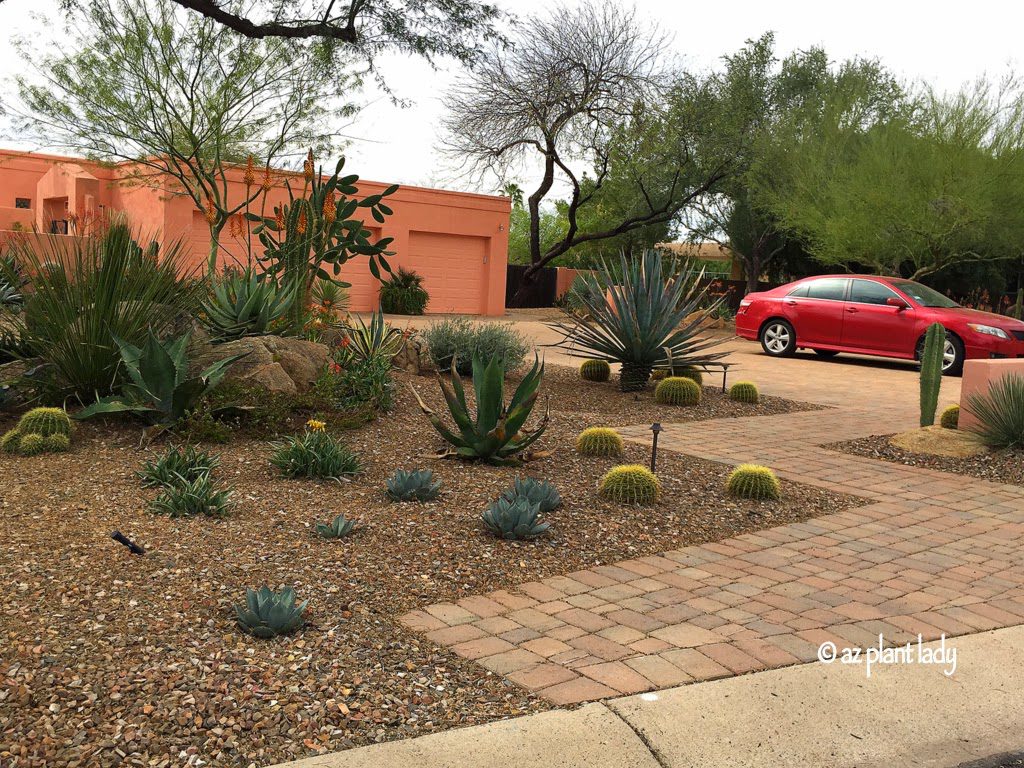Embracing White Flowering Plants
Are white flowering plants a part of your landscape design? They certainly are in mine.
Surprisingly, white flowers are often overshadowed by more vibrant shades like yellow, orange, or red. However, it’s worth noting that white flowers can play a pivotal role in enhancing your landscape by creating striking color contrasts.
In addition, white flowering plants also have a visually cooling effect in the garden, which is a welcome sight in the Southwest where summers are hot.
I’d like to share with you some of my favorite white flowers, all of which do well in the Southwestern landscape.
Disclosure: Some of the links below are affiliate links, meaning, at no additional cost to you, I may earn a commission if you click through and make a purchase.
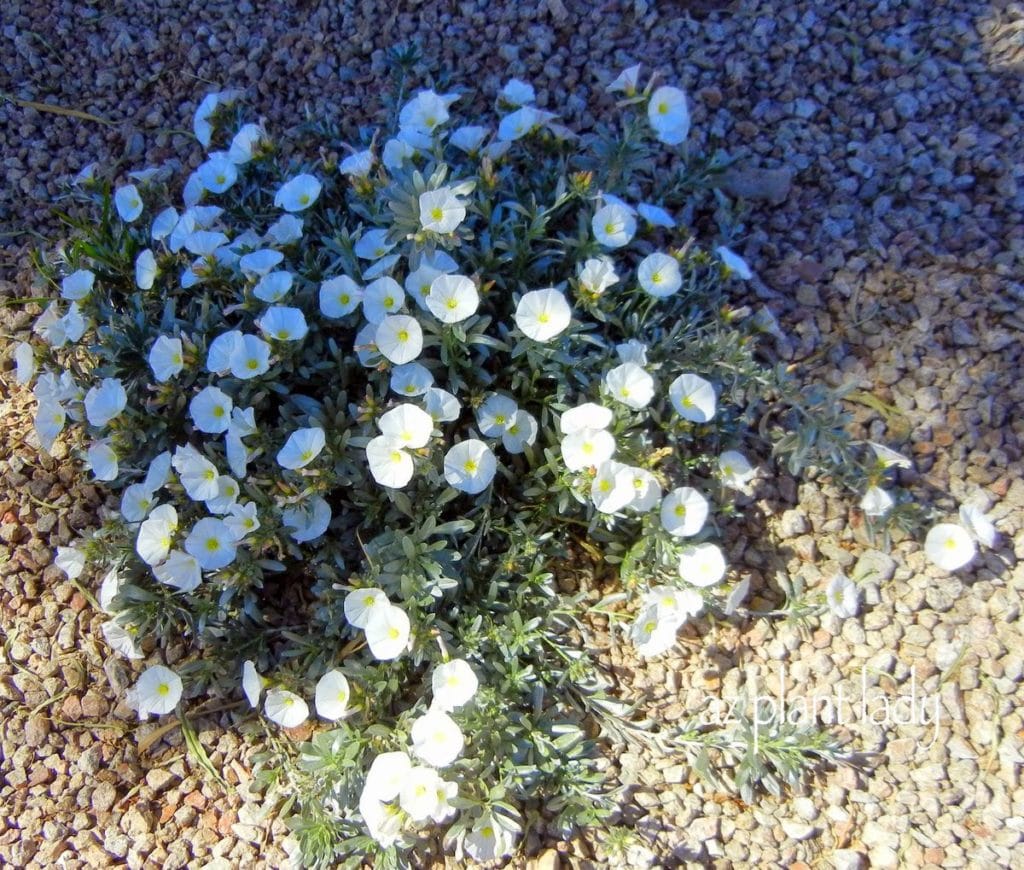
Bush Morning Glory (Convolvulus cneorum)
Bush Morning Glory (Convolvulus cneorum)
Pretty white flowers with yellow centers are just one of the reasons people love bush morning glory. Its silvery foliage is another great color that it adds to the landscape.
In the desert, the flowers appear for several weeks in spring before fading away. However, the silvery foliage is evergreen and will add great color contrast when planted nearby plants with dark green foliage.
Do you have an area that gets full afternoon sun? Bush morning glory can easily handle it while looking great.
Hardy to zone 8, bush morning glory grows approximately 2 ft. tall and 4 ft. wide. Prune back in spring, after flowering has finished by 1/2 its size.
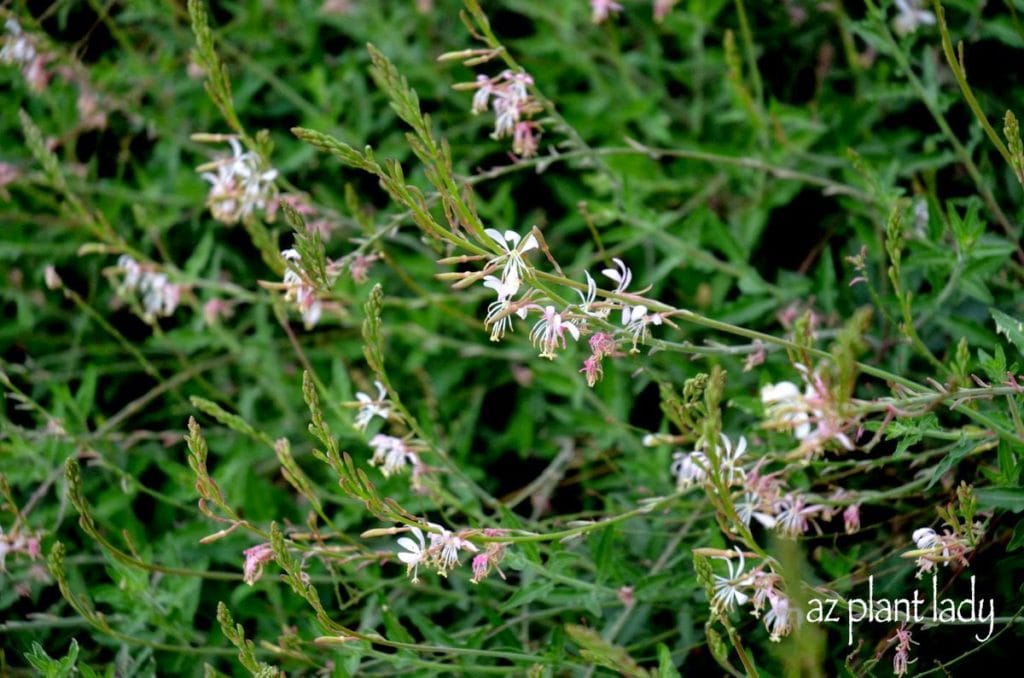
White Gaura (Gaura lindheimeri)
White Gaura (Gaura lindheimeri)
A flowering perennial, white gaura, has a prominent place in my landscape. It has small flowers, shaped like small butterflies, that start out pink and turn white as they bloom.
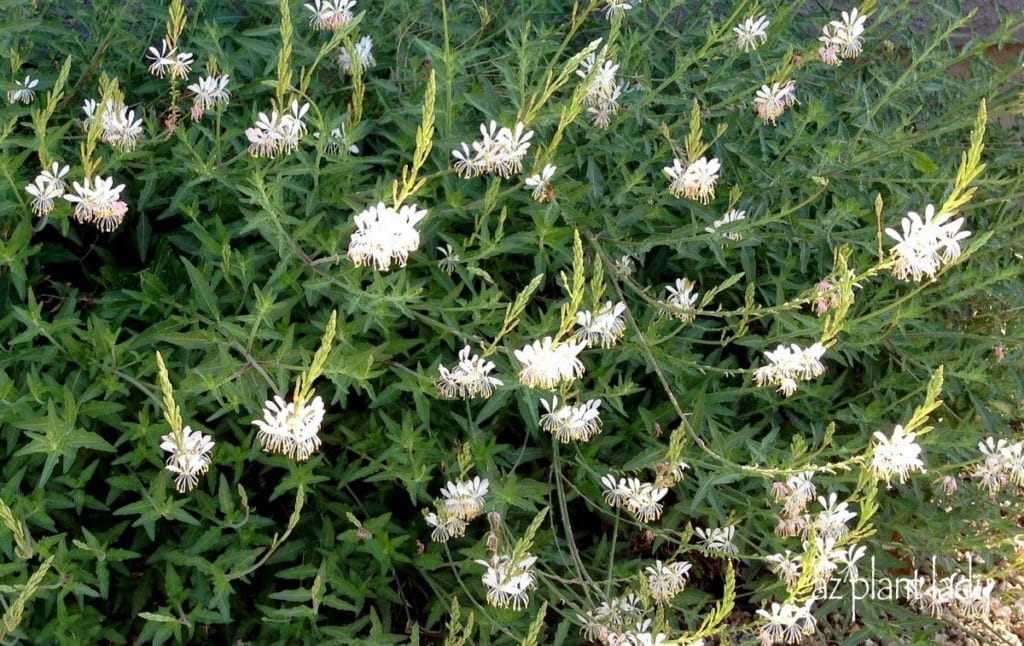
This lovely perennial does best in filtered sun and flowers in spring and fall. It requires little maintenance other then shearing it back in spring to 1/2 its size.
White gaura is related to the pink variety ‘Siskyou Pink’, but has a bushier appearance and grows larger – approximately 2 1/2 ft. wide and tall. This native perennial is hardy to zone 6 gardens.
Use in areas that receive filtered sunlight.
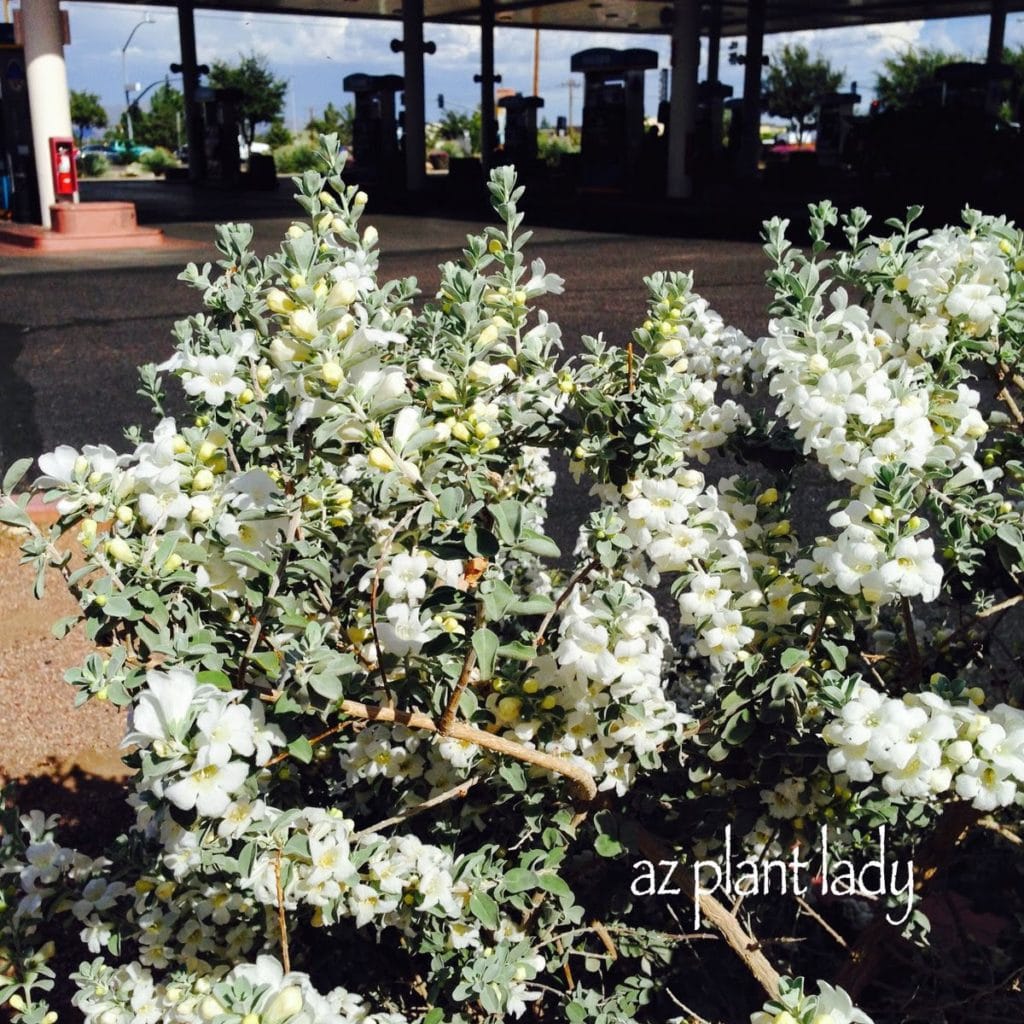
‘White Cloud’ Texas Sage (Leucophyllum frutescens ‘White Cloud’)
‘White Cloud’ Texas Sage (Leucophyllum frutescens)
While most people are more familiar with the purple-flowering Texas sage shrubs, there is a white variety that is well worth adding to your landscape.
If given enough space, ‘White Cloud’ Texas Sage can grow large, 6+ feet tall and wide. It thrives in full sun, and in summer and fall, periodic flushes of white flowers cover the silvery green foliage.
Avoid the temptation to excessively prune this shrub, as this decreases flowering and is not healthy for this type of shrub. Hardy to zone 7, this shrub looks great as an informal hedge or against a wall.
Hedge trimmers aren’t needed for pruning Texas sage. I’ve used my Corona Compound Loppers to prune mine for over 10 years, with some hand pruning as needed for wayward branches.
For guidelines on how to (or how NOT to) prune flowering shrubs, click here.
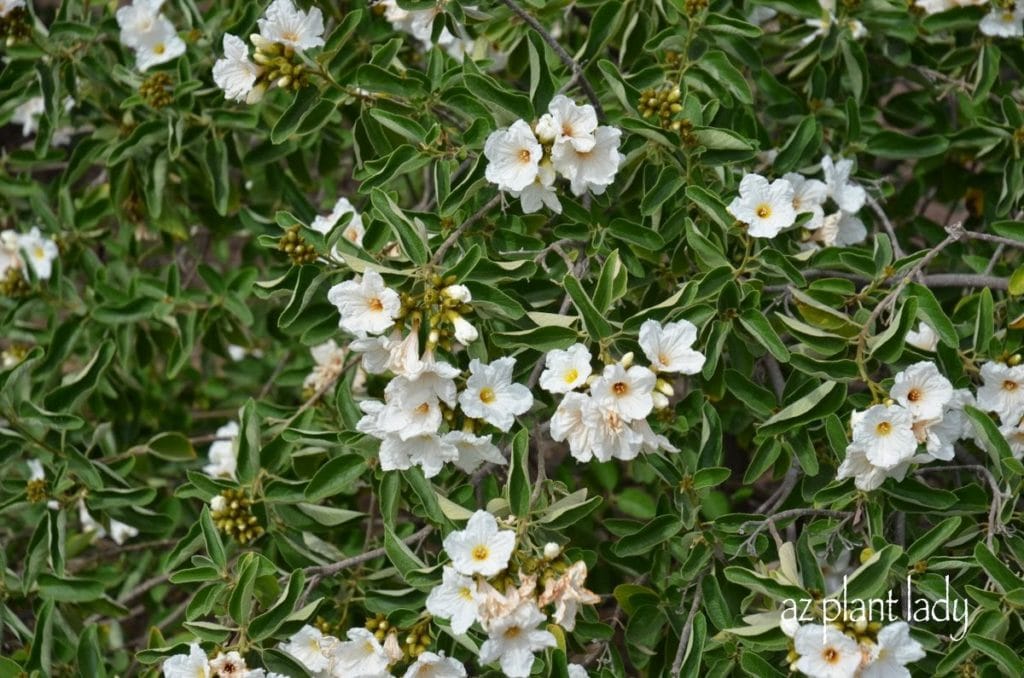
Texas Olive (Cordia boissieri)
Texas Olive (Cordia boissieri)
This Texas native is a huge favorite of mine – Texas olive is a large shrub or small tree, depending on how you prune it. It has dark green, leathery leaves, and beautiful white flowers, which appear spring through fall on evergreen foliage.
Whenever I see this shrub, I always take a moment to admire its beauty, since it isn’t used often in the landscape – but it should be!
Small fruit, resembling an olive, is produced and is edible. They thrive in full sun. Allow plenty of room for it to grow as it gets 25 ft. tall and wide. Hardy to zone 9, the only drawback of this white-flowering beauty is that it can be a little messy, so keep away from swimming pools.
All of these white flowering plants are drought tolerant and do well in hot, arid climates.
Do you grow any of these in your garden? Which is your favorite?
As beautiful as these plants are, there are more to consider. Check out more in Part 2!


